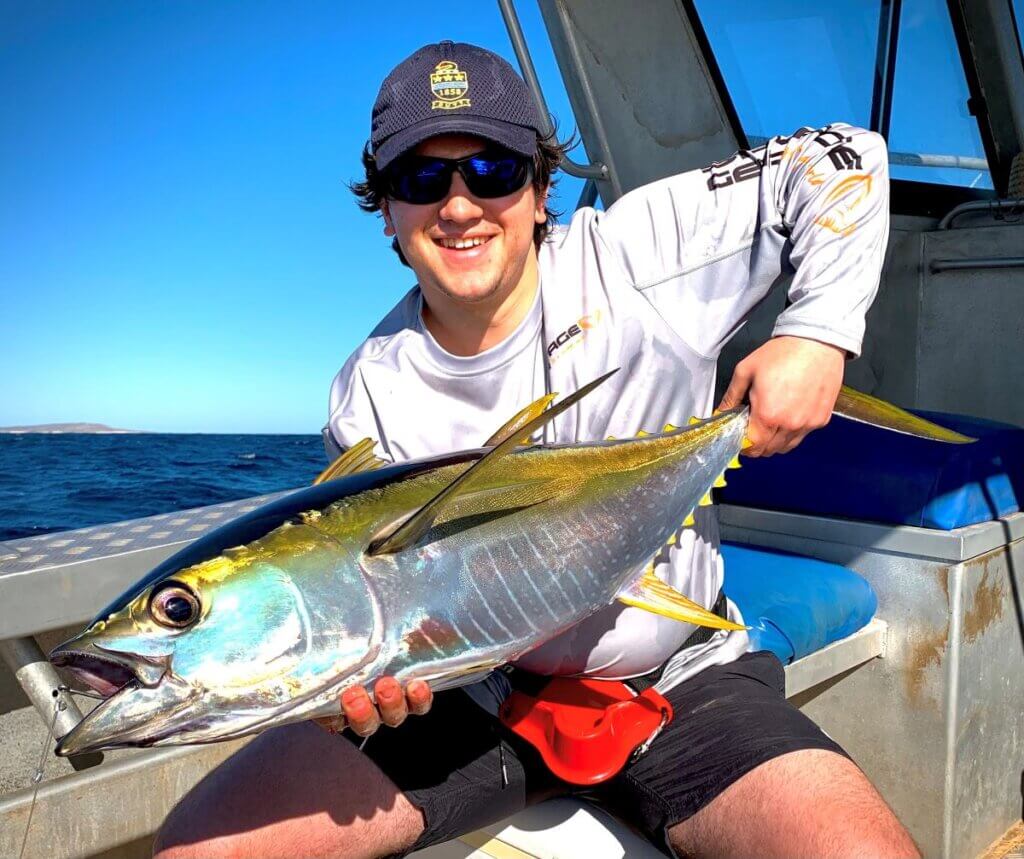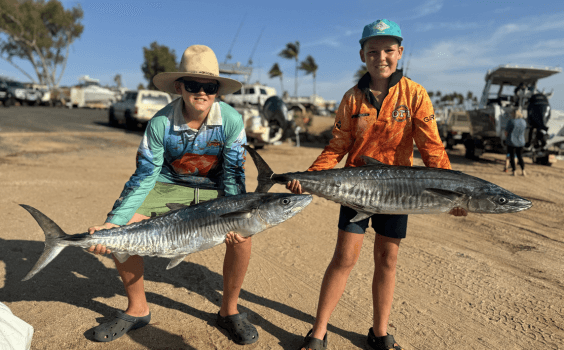Yellowfin tuna are a beautiful looking fish and a constant source of fascination for me, writes Western Angler editor Scott Coghlan in the latest edition of Scott’s Species.
Species: Yellowfin tuna, Thunnus albacares
Eating: 4 stars
ID: Long, yellow second dorsal and anal ‘sickle’ fins.
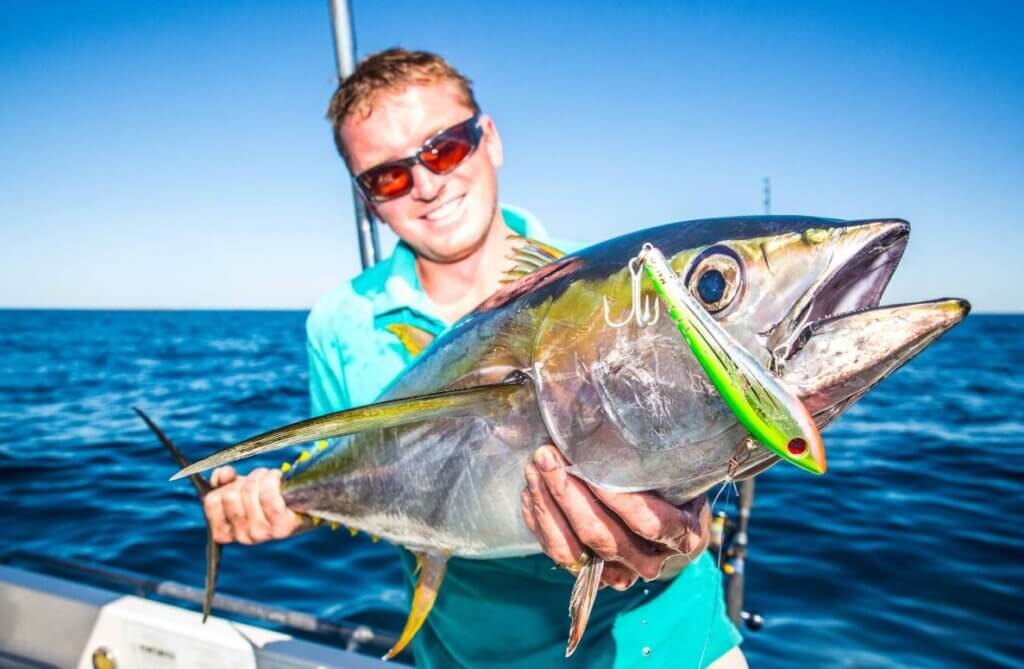
Found all around Australia, yellowfin tuna are a schooling pelagic species and a prized capture for several reasons.
Growing up to 180kg and almost 2m in length, they are usually caught at a fraction of that size, up to 30kg being most common.
In recent years there have been some strong runs of large fish off Exmouth, with fish to 90kg showing up out wide in summer.
The biggest fish seem to stick to deep water around the Continental Shelf these days and this would be the location to try to target the larger models.
Smaller fish often show up off Perth in the warmer months, especially in north metro waters and at the fish aggregating devices (FADs).
The Abrolhos Islands can be another great place to target them, along with the west side of the islands off Carnarvon.
At times they have been known to follow prawning boats in Shark Bay in some numbers.
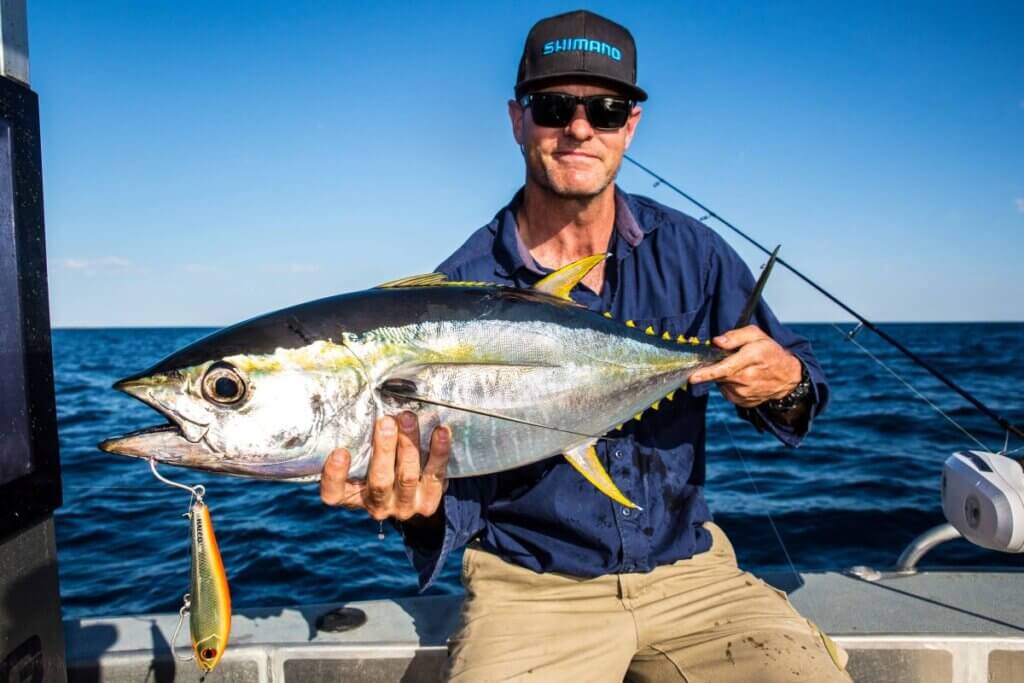
In years gone by massive yellowfin were encountered off Albany and even in King George Sound.
Albany tackle store owner Jim Allan has photos of fish to 120kg caught in the sound and they were often seen around mulie boats.
However, it has been at least a couple of decades since they were last seen in that area.
The cause of their disappearance is unknown but some people speculate their demise was linked to the mulie virus that decimated pilchard stocks for many years.
Yellowfin flesh, if well treated upon capture, makes for great sashimi and is also fantastic when cooked.
Largely a bluewater species, yellowfin are very fast and will tear line off the reel when hooked.
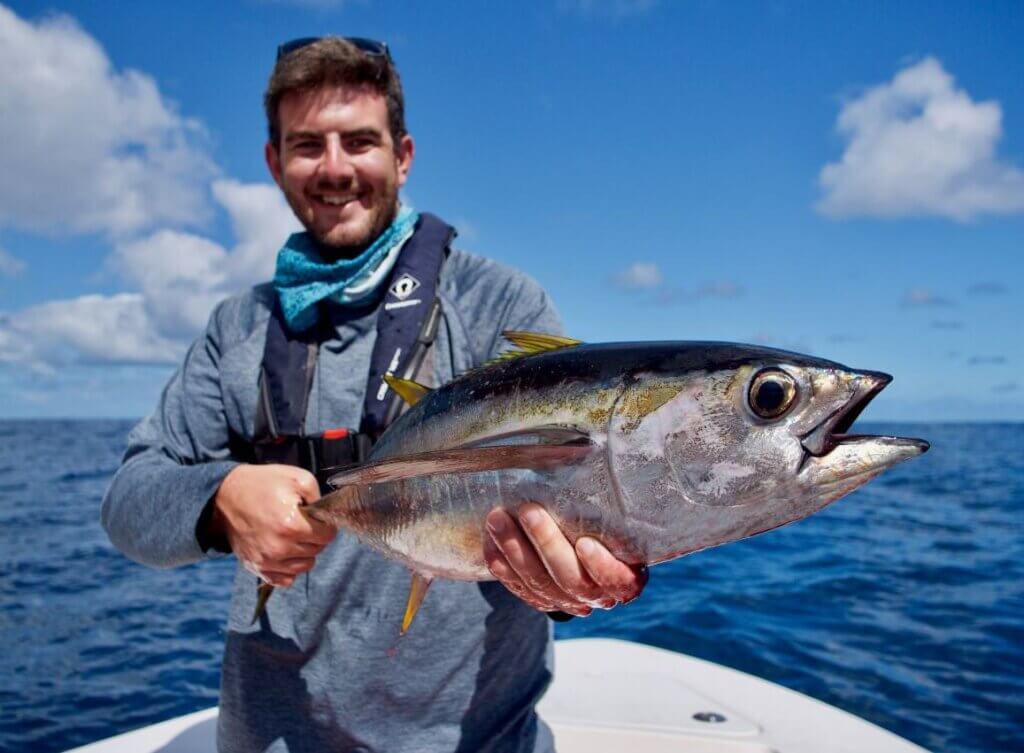
They are also very strong and will fight doggedly when close to the boat, often circling down deep.
Yellowfin tuna will respond well to berley, such as cubes of fresh fish or pilchard. They can be caught a number of ways, including floating bait down the burley trail, and trolling dead baits.
Trolling skirted lures is also effective, as are minnow lures and large metals.
For the big fish off Exmouth, small skirts trolled at seven knots to eight knots have proven to be dynamite.
Working birds will often indicate the presence of yellowfin, which can then be seen crashing bait on the surface. If there are no schools working, trolling is a good way to find the fish.
Once they have been found, berleying up can keep them around the boat.
I usually encounter yellowfin at the Mackerel Islands and I like to cast lures at them once we have found them trolling.
Strong game or heavy spinning gear is needed to subdue big yellowfin and the use of wire is not recommended as it appears to put the fish off striking.
